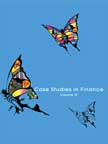Apple Inc: Setting New Inventory Management Standards
|
ICMR HOME | Case Studies Collection
For delivery in electronic format: Rs. 400; For delivery through courier (within India): Rs. 400 + Rs. 25 for Shipping & Handling Charges
» Finance Case
Studies 
Custom Search
Please note: |
|||||||
ExcerptsReentry of Jobs
He launched the iMac in ten months at a price of $1,299. With this launch, Apple entered the low priced consumer market. The launch of the iMac was supported by a $ 100 million advertising campaign. The product was a big hit and sold over 278,000 units in the first six weeks. In the financial year 1998, Apple ended its stream of losses and turned profitable. The company generated a profit of $309 million that year. The company focused on streamlining its operations and specialized in limited product lines. Due to its small product lineup, the company also developed exclusive relationships with its suppliers... Inventory Management from 1995 to 1997During 1995 to 1997, the company's revenue growth was declining and in the same line the net profit also declined from $424 million to ($1,045) million from the financial year 1995 to 1997. However, every product or raw material was stocked in a warehouse. The company accumulated inventories of $1,775 million in the financial year 1995... Inventory Management from 1998 to 2011In 1998, Timothy D. Cook (Cook) joined Apple. He was in charge of Apple's worldwide operations. Jobs and Cook focused on reducing the inventories of the company. They applied the strategy "slash inventory, shut warehouses, run manufacturing close to the bone. This helped Apple get back on to the path of profit and set a new bar for the electronic industry like competitors like Dell." They closed down factories and warehouses all over the world. They established relationships with contract manufacturers. They were successful and the company generated a net profit of $309 million during the financial year 1998... Road AheadCook developed a good ecosystem for the company's business. He had gained good experience in operational and inventory management. Under his leadership, Apple developed an entire ecosystem of suppliers, who supported its business operations. The company set itself the goal of obtaining stellar products and services within limited timeframes, at a cost that represented "the best possible value" to both customers and shareholders... Exhibits
Exhibit I: Apple's Product Lineup |
Case Studies Links:-
Case Studies,
Short Case Studies,
Simplified Case Studies.
Other Case Studies:-
Multimedia Case Studies,
Cases in Other Languages.
Business Reports Link:-
Business Reports.
Books:-
Textbooks,
Work Books,
Case Study Volumes.








